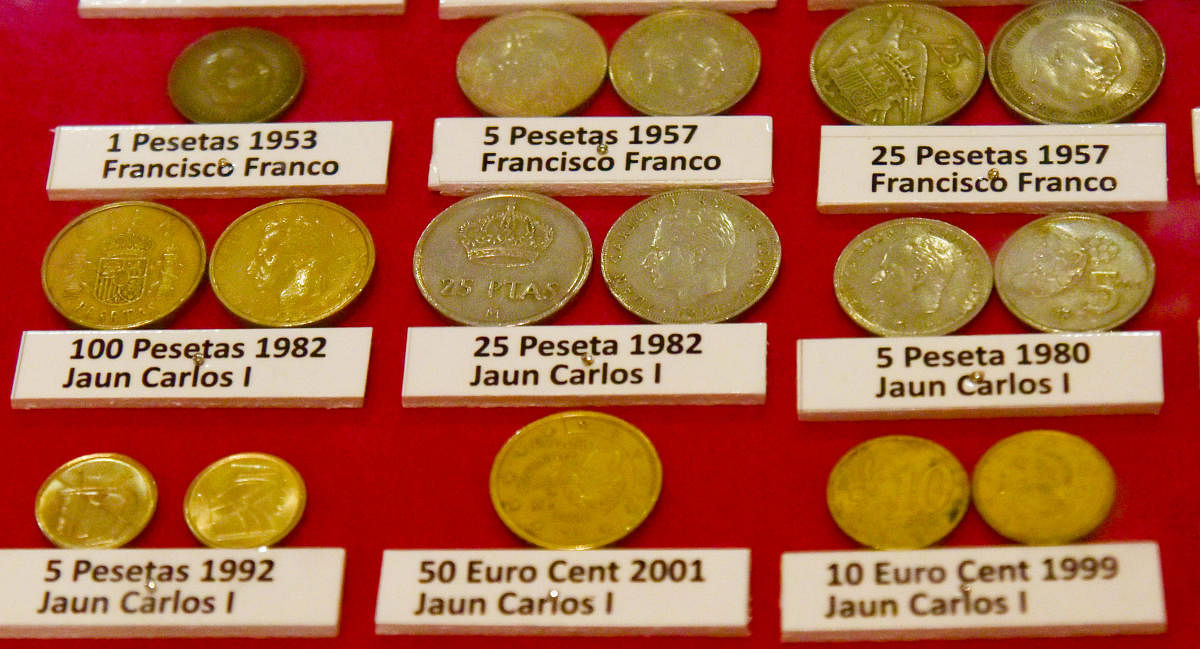
If you like seeing ancient coins and understanding history through the coins, then Aloyseum, a museum at St Aloysius College in Mangaluru, is the place for you.
Nearly 1,328 coins from 82 countries are on display. The oldest coin in the gallery of the museum dates back to 211 BC, a Denarius of the Roman Empire.
The rarest and oldest coins are being displayed in the gallery of the museum. In fact, the authorities of the museum have around 4,000 coins. Of which, 1,328 coins have been sorted, identified and categorised for display, said Kavitha, curator of the museum.
The majority of these coins were brought from Italy in 1913 by Fr Chiappi when the museum of the Collegio Vida was dismantled. Later, many other coins were added by rectors and other Jesuit fathers of college. Along with that, nearly 500 coins were donated by localities, she said.
Rare coins from 27 European countries are displayed.
The ancient coins are from Roman times representing practically all the Caesars and a coin from the Byzantine Empire.
European coins
In the European continent coins, there are coins from France, England, Germany, Greece and other countries. Some of the coins are, 10 Centimes of 1853 from Napoleon III, 2 Franc from 1871 of Ceres, 5 Centimes from 1855 of Napoleon III and 25 Centimes from 1904 of Laureate Liberty.
A few of the coins of England that are on display are Half Farthing 1843 of Queen Victoria, Half Penny 1889 of Queen Victoria, Half Crown 1914 of Georgivs V, One Shilling 1931 of Gerogivs V and so on and from Greece, there are 2 Lepta 1869 of George 1 and others.
Coins of 35 Asian countries belonging to various kingdoms and periods are on display. The oldest coins belong to the Polonnaruwa kingdom of Ceylon called Massa coins.
Coins of Indian princely states of Baroda, Gwalior, Indore, Hyderabad, Kutch, Mysore, Travancore, etc., are on display.
Besides coins belonging to the colonial period of Dutch, Danish, Portuguese, British are also exhibited. The oldest coin - Danish East India - copper cash of 1615, Pulicat Mint and Kas of Christian VII of the 1770s, British East India’s 17th and 18th-century coins of Madras, Bombay and Bengal presidency, Dutch East India - Duits of 1737, 1732, Akbar’s 16th-century silver Mohur, Tippu Sultan’s Patan mint and Farrukhi mint coins of 1782-1799 also find a place in the museum.
Two Pagoda belonging to 1829-1855 of Travancore, Gold Pagoda of Krishnaraja Wodeyar III belonging to 1799-1868 and others are on display.
There are also coins of seven countries of the African continent including rare coins of Algeria, Zanzibar and Egypt at the gallery in addition to coins from three Oceania countries of Australia, New Zealand and Papua New Guinea.
The coins gallery was inaugurated by St Aloysius Institutions Rector Fr Melwin Pinto on Wednesday. Fr Leo, retired professor of the college, was also present.